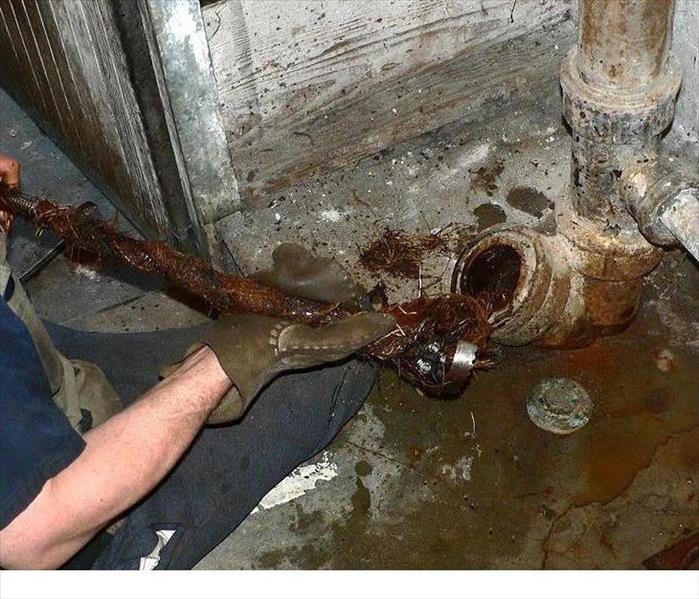Sewage Water Clean Up in Cherry Hill NJ,
6/2/2017 (Permalink)
Sewage damage is the most dangerous form of water cleanup. The possibility of blood-borne pathogens and other contaminants is high. The following are basic instructions for handling a sewage water loss. It is strongly encouraged that a technician take a certification course such as Water Restoration Technician, BEFORE attempting this kind of water damage cleanup.
Recommendations:
- Advise any occupants that they should leave/evacuate the space.
- Inspect and identify any possible hazards that might be in the environment. Identify if electricity is going to be a hazard and/or if there are any safety or health hazards in the affected area.
- Technicians must use proper personal protective equipment (PPE). Each person should be working with proper skin protection (Tyvek coveralls), hand protection (exam gloves and/or leather gloves), goggles, and respirators. Rubber boots should also be worn over the top of coveralls.
- Identify, repair, and/or eliminate the source of the sewage and water.
- Containment may need to be set up to limit the risk of secondary damage to unaffected areas of the location.
- Pump out the water and sewage. Check with local municipalities to identify if there are any restrictions concerning the disposal of these materials.
- Determine if materials can be decontaminated or if they must be removed and replaced.
- Check other systems (HVAC) for damage and determine what cleaning and repairs will need to be done to those systems.
- Using a pump-up sprayer or ULV fogger, apply the Safe, and Appropriate Cleaning Agent, to all affected areas. This will help treat any dangerous bacteria that might have entered the environment.
- Remove all unsalvageable materials from the space, including the carpet, pad, affected drywall, and other items that have been contaminated. Use caution when removing contaminated materials to ensure that cross contamination is not taking place.
- Dry the area as per requirements (See Drying Category 3 Water Losses for more information).
- After drying, treat all salvageable items that will remain with a complete and thorough cleaning followed by a Safe, and Appropriate Cleaning Agent,
- Hard surface items, such as sub flooring, joists and studs, should be treated with a preventative coating.
- Repair and reinstall items and areas that have been cleaned and sealed.






 24/7 Emergency Service
24/7 Emergency Service